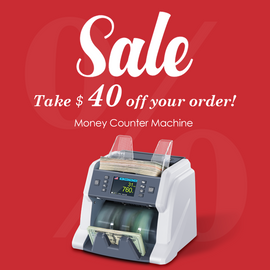Cash inventory data is vital for making smart financial decisions. Cash inventory data refers to the amount and change of cash and cash equivalents that your business has in a certain period. By tracking and analyzing your cash flow, you can optimize your business operations and make better strategic decisions. In this article, we will show you how to use cash inventory data to make wise financial choices.
Track Cash Flow Trends
First, monitor your cash inflows and outflows over time. This will help you spot patterns in your cash flow, such as seasonal fluctuations or fixed expenses. Knowing these trends allows you to make more accurate financial forecasts and plan accordingly. For example, if you notice that your cash inflows are higher in a certain quarter than others, then you can save more cash in that quarter for future possible cash shortages.
Analyze Cash Flow Ratios
Next, calculate some key cash flow ratios, such as the cash conversion cycle and the cash ratio. Understanding what these ratios mean allows you to evaluate your business’s liquidity and its ability to meet short-term obligations. Liquidity is the ability of your business to pay its due debts on time, while short-term solvency is the ability of your business to use its current assets to pay its current liabilities. By tracking these ratios over time, you can identify areas that need improvement and make adjustments as needed. For example, if you find that your cash conversion cycle is too long, then you can take measures to speed up your accounts receivable collection or reduce your inventory turnover time.
Forecast Future Cash Needs
Based on historical data and projections, estimate your future cash needs. Factor in expected expenses, purchases, and other financial commitments. This allows you to ensure that you have enough cash on hand to cover your obligations, while also identifying potential shortfalls that need to be addressed. For example, if you plan to buy a new equipment in the next three months, then you need to prepare enough cash in advance to pay for the equipment cost, and consider the impact of the equipment purchase on your cash flow in the next few months.
Optimize Cash Reserves
Determine the right amount of cash to hold in your reserves. Holding too much cash can be unproductive, as it does not generate income or appreciate in value, while holding too little cash can expose you to unexpected expenses or credit risk. By finding the right balance, you can optimize your cash reserves to provide both stability and growth potential. Generally speaking, the right amount of cash reserves should be able to meet the following three objectives: (1) meet daily operational needs; (2) cope with unforeseen events or opportunities; (3) achieve long-term investment or savings.
Identify Opportunities
Use your cash inventory data to identify opportunities for higher margins, lower costs, and reduced cash leakage. By expanding profitable products or services and streamlining your business processes, you can improve your overall financial performance. For example, you can use your cash inventory data to analyze the contribution of your products or services, which is their impact on your cash flow. If you find that some products or services have a lower contribution than the average level, then you can consider raising their prices, lowering their costs, or stopping offering them.
Make Better Purchasing Decisions
Cash inventory data can also help you make smarter purchasing decisions. Avoid out-of-stock situations and ensure that you have the right inventory levels to meet customer demand. Too much or too little inventory can affect your cash flow and profit. Additionally, use your cash position to negotiate better payment terms with suppliers, which can improve your cash flow and working capital. For example, you can ask suppliers to extend payment terms, offer discounts, or provide interest-free loans.
Improve Working Capital Management
By managing your inventory, accounts receivable, and accounts payable more efficiently, you can free up capital for growth. Working capital is the amount of money that your business needs for daily operations, which is equal to current assets minus current liabilities. Efficient working capital management enables you to invest in expansion, new products, or other opportunities that can enhance your business’s long-term success. For example, you can increase your working capital by improving collection efficiency, lowering inventory costs, or extending payment terms.
Conclusion
In summary, cash inventory data can significantly improve your financial decision-making. By tracking trends, forecasting future needs, optimizing cash reserves, and making better purchasing decisions, you can streamline your business operations and pave the way for growth. The key is to stay informed and use your cash inventory data to make smart, data-driven financial decisions that support your business objectives. If you want to manage and analyze your cash inventory data more easily, then we Ribao Technology offer you a range of high-quality cash handling equipment, such as money counter, coin counter, and so on.
Ribao Technology are a professional company that specializes in the research, development, production, and sales of cash handling equipment. We are committed to providing customers with efficient, accurate, and secure cash handling solutions. We have over 20 years of industry experience and have provided our products and services to 55 markets worldwide. We constantly innovate and improve our technology and products to meet the needs of different customers and different currencies. Whether you are a bank, jewelry store, gas station, casino, restaurant, or government agency, we can provide you with suitable and reliable cash handling equipment. Please click the following links to see our Ribao Technology’s product introduction and contact information: https://www.ribaostore.com/







